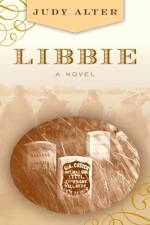- The Waggoners of Texas
av Judy Alter
325,-
In the 19th century, Daniel Waggoner and his son, W.T. (Tom), put together an empire in North Texas that became the largest ranch under one fence in the nation. The 520,000-plus acres or 800 square miles covers six counties and sits on a large oil field in the Red River Valley of North Texas. Over the years, the estate also owned five banks, three cottonseed oil mills, and a coal company. Headquarters are in an office building in Vernon. Estimated value last quoted was $300 million.The history is colorful. Although Dan seems to have led a fairly low-profile life, W. T. moved to Fort Worth, became a bank director, built two office buildings, ran his cattle on the Big Pasture in Indian Territory (Oklahoma), hosted Teddy Roosevelt at a wolf hunt in the Big Pasture, and sent Quanah Parker to Washington, D.C., for Roosevelt’s inauguration. W. T. had three children including his daughter, Electra, the light of his life. W. T. built a mansion in Fort Worth for her—today the house, the last surviving cattle baron mansion on Fort Worth’s Silk Stocking Row, is open to the public for tours and events. Electra, an international celebrity and extravagant shopper (she once spent $10,000 in one day at Neiman Marcus), died at the age of forty-three. W.T.’s brother Guy had nine wives; his brother E. Paul, partier and horse breeder, was married to the same woman for fifty years and had one daughter, Electra II. Electra II was a both a celebrity and a talented sculptor, best known for a heroic-size state of Will Rogers on his horse, Soapsuds, as well as busts of two presidents and various movie stars. She is said to once have been involved with Cary Grant. After marriage to an executive she settled in a mansion at the ranch and raised two daughters.This book tells the story of the Wagonner women and their need to do something with the restless energy they possessed. The women did not have—or did not choose—ranching as an outlet for their strong personalities. The story is also about the juxtaposition of a love of the land versus the self-indulgent love of money—a common theme among ranch families that led to the dissolution of many.








